SanDisk Introduces 1GB XD-Picture Card
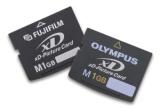
Source: Shuttertalk
Latest news and reviews on flash memory cards.


The Taiwanese card format is dubbed M¼-Card, which stands for micro ¼ card, and it is backed by a handful of local card makers, system designers and IC design houses. Also backing the effort is a quasi-government research group, the Industrial Technology Research Institute (ITRI), which coordinated the effort.
The group has formed a M¼-Card Alliance to promote the card, and to coordinate further technical development of the format. Its membership is currently limited to the original members who conducted research related to the technology, but it is preparing to open the group to at least 40 other local companies that have expressed interest in the format.
This week, while engineers rush to finish documenting the spec, the alliance will meet with representatives from the MultiMediaCard Association, which oversees the open-standard MMC format and is interested in combining the two specs and discussing cooperation. The discussions will happen in Taiwan, but an MMCA spokesman declined to confirm the meeting or comment on the new format.
The M¼-Card Alliance has not engaged with the SD Card Association, of which all but one are members (PDC and ITRI sit on its board of directors).
Backers are also claiming that its I/O is simpler to design with than that for SD cards. "The SD I/O is not so easily used. It requires a lot of effort to develop, especially in terms of software," said Gordon Yu, president of C-One Technology, which sells flash-based cards under the brand name Pretec and is a member of the alliance.
Simplicity derives from the use of USB protocols for the digital portion. But the speed is twice that of USB, and the low-power consumption is only one-third or one-fourth that of USB 2.0, said Liu Chih-yuan, who directed the project at ITRI and is chairman of the M¼-Card Alliance. "That's our strength. It's a very low-power, high speed USB compatible interface. So we are complementary to the MMC."
The alliance plans to introduce the card in various stages this year, with demonstrations early on and full-fledged functionality coming by year's end. Cards based on the format would be competitively priced with MMC-based cards, according to the alliance.
Card vendors are likely to save money on the controller, which is about 5,000 logic gates, if only IP for the M¼-Card format is included.
Liu estimated a 10 percent savings on a controller that sells for about $1 today. If device and card makers want to support all standards, including USB 2.0, the cost would be about 30 percent higher, Liu said, and a royalty would be paid to the SD patent holders.
Even a scenario where a device or card supports all the open standards — MMC, USB 2.0 and M¼-Card — the gate count would still be around 25,000, so the cost would still be higher.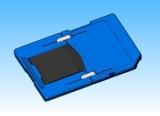
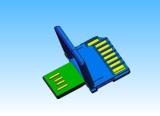
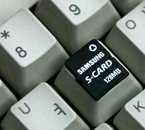
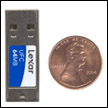
Toshiba has reportedly agreed to supply Apple with flash memory chips--presumably for the much-rumored flash iPod. China Daily reports that Yasuo Morimoto, senior executive vice president at Toshiba, has confirmed his company will start selling the memory chips to Apple "early next year." Merrill Lynch analyst Steve Milunovich expects Apple to introduce a cheaper flash memory-based iPod at Macworld Expo in January. Toshiba currently supplies Apple with the 1.8-inch hard drives that the company uses in its 4G iPods.